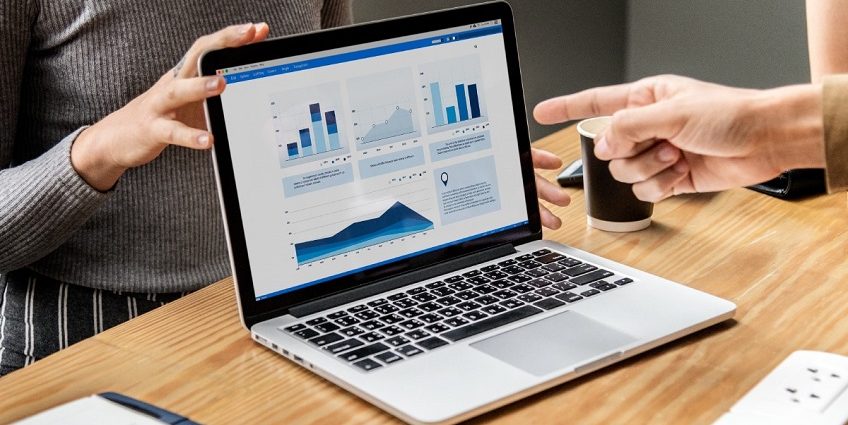Modern marketing technology offers access to an almost infinite quantity of B2B data points.
Without a laser-focused marketing plan, it’s easy to lose sight of what’s crucial and go down the rabbit hole. Does it really matter whose football team and meal deal each lead prefers?
No, you should only concentrate on certain categories of client data.
As award-winning suppliers of a B2B lead generation and marketing automation platform, we are well-versed in data.
In this post, we’ve included an infographic that outlines the customer data categories required for B2B marketing, as well as the particular data points you should gather.
B2B client data: What is it?
Customer or client data is the information that clients provide you throughout their online and offline interactions with your company. For instance, whether users use mobile apps, visit your website or social media, reply to marketing campaigns, complete surveys, or attend your event.
The foundation for developing an effective data-driven marketing strategy is the collection and analysis of various sorts of consumer data.
Since segmentation comes before efficiency, splitting apart your consumer data enables you to concentrate on the important things.
Scroll down to find out how!
What are the different sorts of B2B client data?
We’ve discovered 6 different sorts of B2B data that marketers should be gathering. You could lean more heavily on some of them than others depending on the nature of your particular firm, but they should all be addressed to some level.
1 – Information on demographics
The “who” is demographic consumer data, and we don’t just mean Pete Townshend’s musical group! Who is this individual in particular? This necessitates gathering the following information for B2B marketers:
- Age
- E – mail address
- Phone Number
- Geographical location
- employment background
- Skill sets
Every marketer has to know this basic fact. It won’t provide you with a lot of details about the lead’s purchasing patterns or hobbies, but it may reveal if they suit your ICP (ideal customer profile).
2 – Firmographic information
Data from firms is the “who for.” Which business is this individual employed by? What is the business’s mission? Measuring this kind of consumer data requires the following from B2B marketers:
- business name
- company address
- Industry (sector)
- number of people (employee strength)
- company earnings
Many business owners stop here. Enough facts will be available from a mix of firmographic and demographic data points to conduct a growth marketing strategy that is reasonably targeted. But if you collect even more pertinent information, you may go much farther.
3 – Technological data
The technologies that the worker or business uses are referred to as technological data. These kinds of consumer data should be gathered by marketers for two reasons:
- The marketer may get some insight into the contact’s processes, how they could be enhanced, and any potential daily challenges by being aware of this. If you’re offering a specific solution that other technologies don’t have, this is really helpful.
- Change or perish. You may create your own workflow by learning about the technology that other businesses use. Consider the benefits that these technologies can provide before deciding if you should use them personally.
4 – Chronographic information
Chronographic data points undergo temporal change. These customer data points might pertain to the business or the employee, similar to technographic data. The following items make up chronographic data:
- Location change
- Job entry/exit
- Company finances
- Initial public offering.
- Business acquisition
- Corporate event participation
- Organization hiring
Without frequent updates, client data sets of this kind may rapidly become obsolete. Iscope maintains the data by doing searches to see how leads or businesses have evolved over time. You may then use Iscope’s internationally compatible data to update your outdated database.
5 – Quantitative client B2B data
Quantitative data is the “how much” – cold, hard statistics that marketers must comprehend. This sort of data is obtained throughout the marketing process using marketing tools. Quantitative consumer data points include:
- Website visits
- Form submissions
- Event appearances
- Email read rate
- Click-through percentages
- Current client details
The quantity of quantitative data that may be collected is vast, thus we have only highlighted a few of the more significant ones. The primary advantage of utilizing this form of customer data is its objectivity; you are aware of your position.
6 – Qualitative client B2B data
Qualitative data represents the “how was.” It focuses on quality rather than quantity. This may frequently provide insight into the prospect’s personality. It is difficult to gather on a large scale, but it is always worthwhile to note when you chat with a contact.
Gather this data during the whole consumer experience. Examples of such data include:
- Social media engagement
- Notes from earlier discussions
- Completion of a survey
- Product response
Overlooking qualitative data is very common. It is extra relevant data that does not fall into the data categories that marketers typically prioritize. Utilized properly, it may provide a significant competitive advantage.
Good data Means better marketing
Iscope Digital provides access to all the necessary demographic, firmographic, technographic, and chronological data.
With 16 data points on more than 400 million contacts globally, Iscope is a one-stop marketing solution.
Consult with one of our specialists immediately to see whether our solution might be the missing piece to your inbound lead generating jigsaw.



